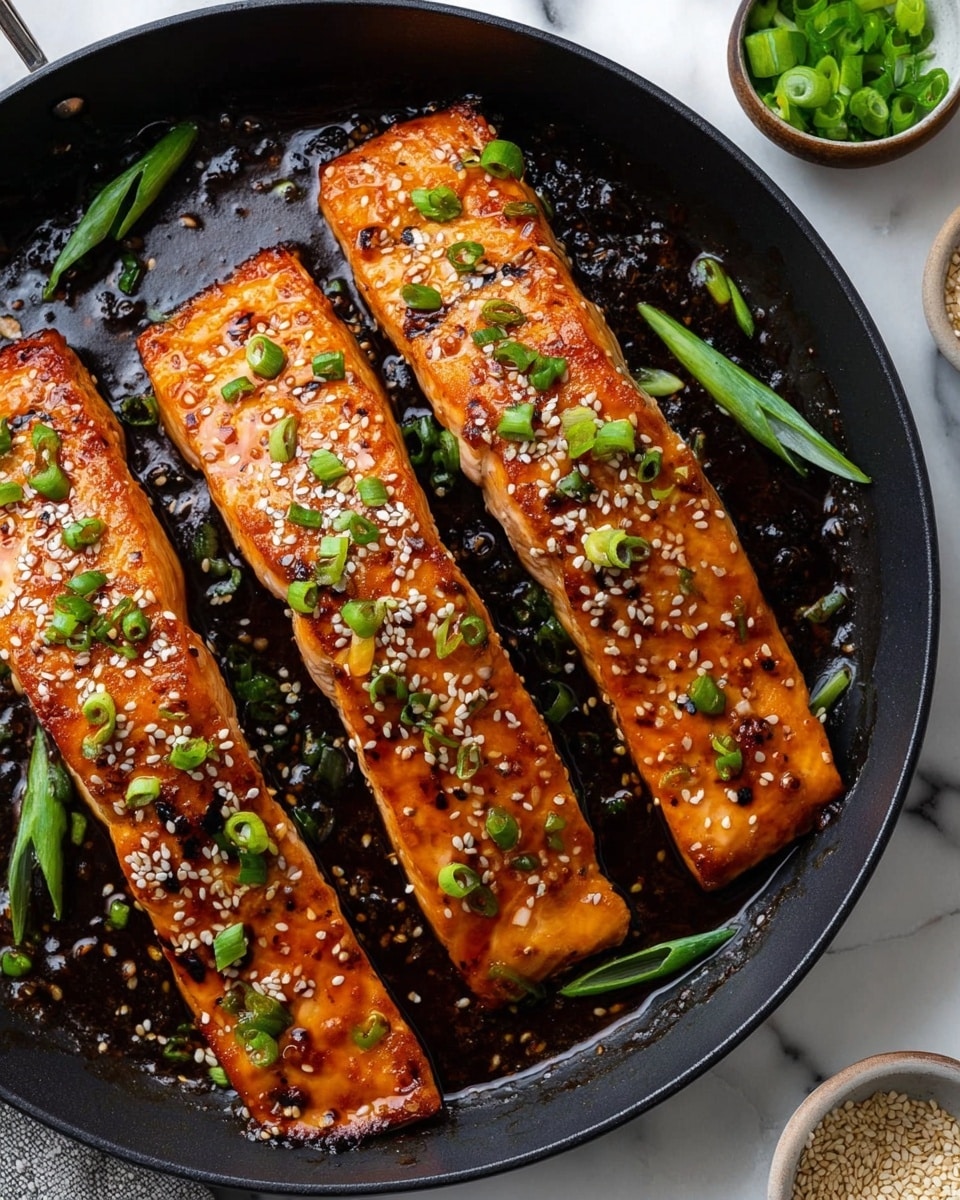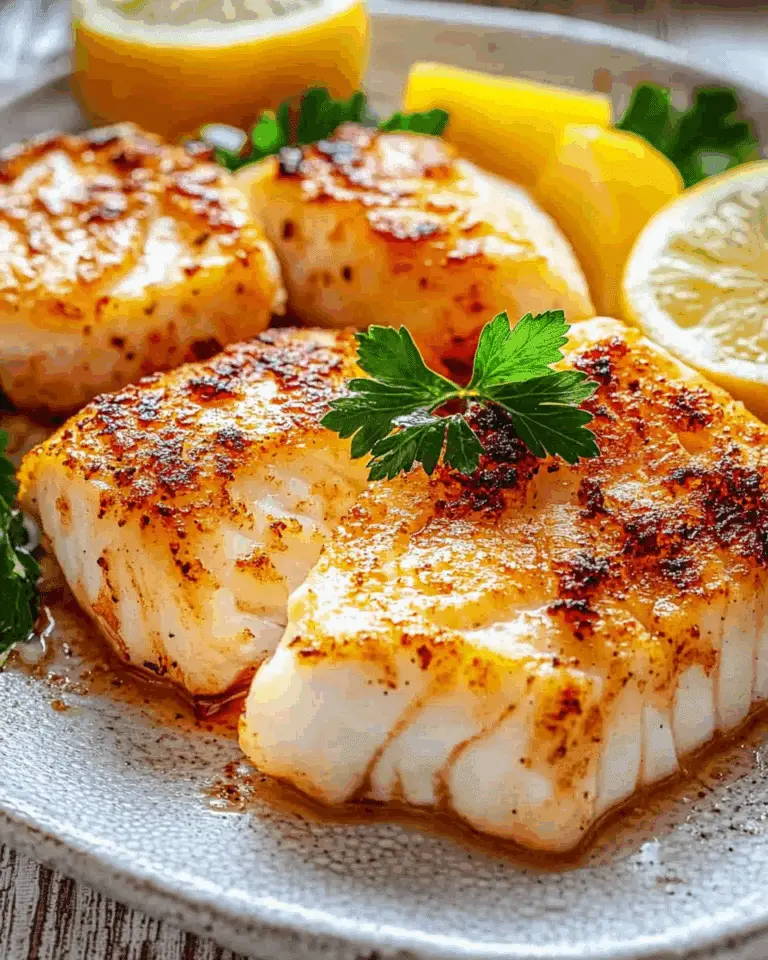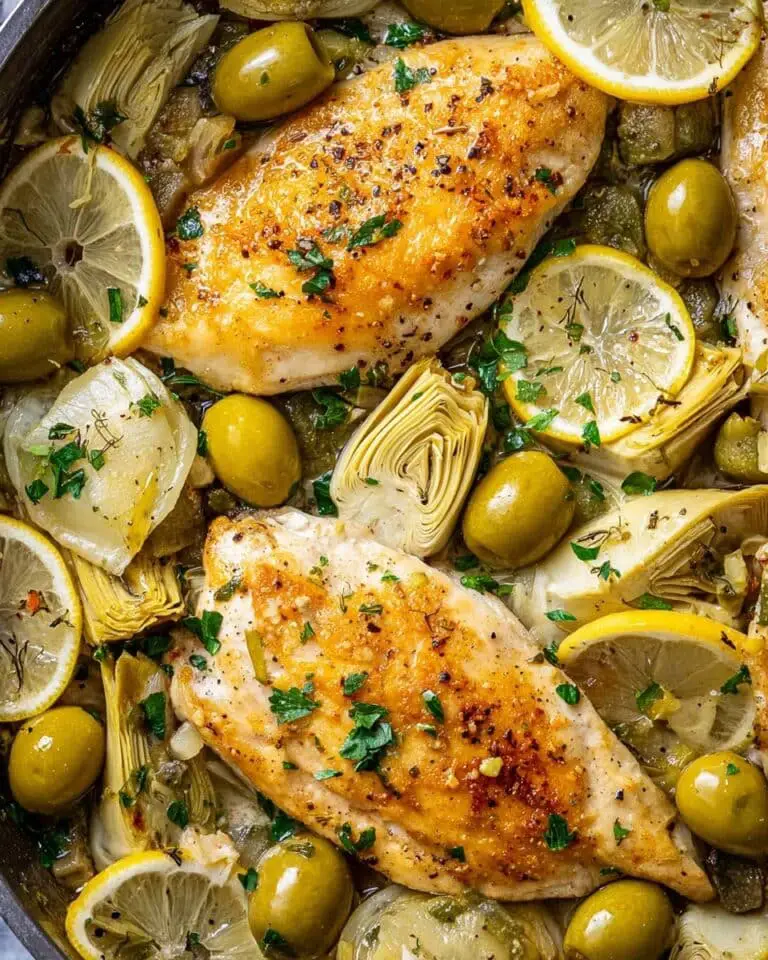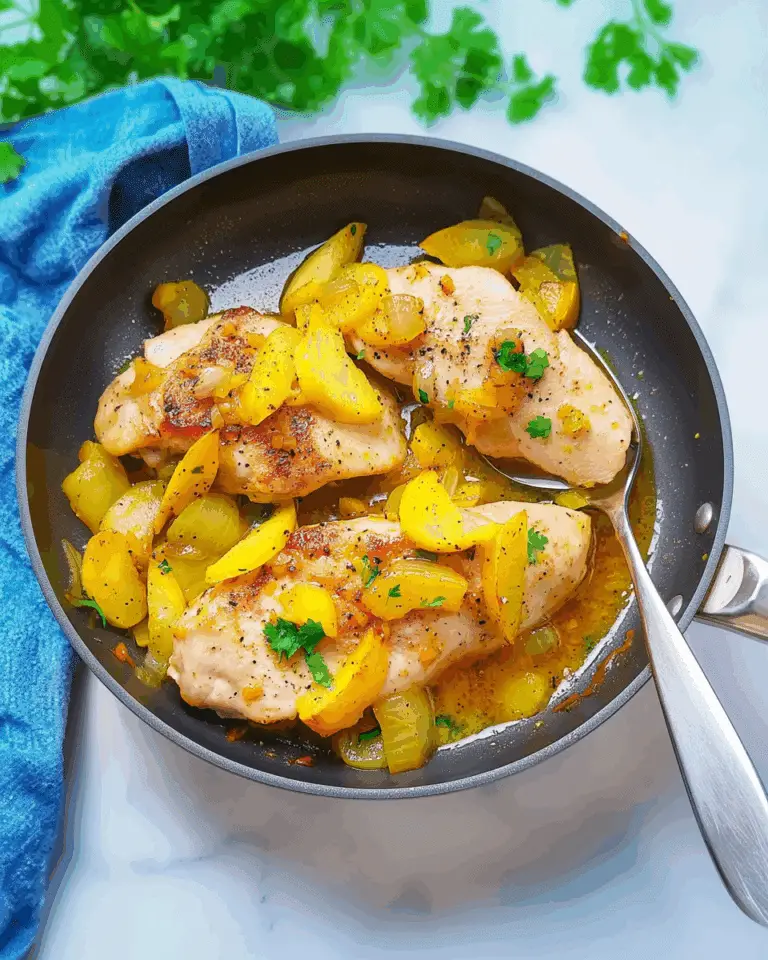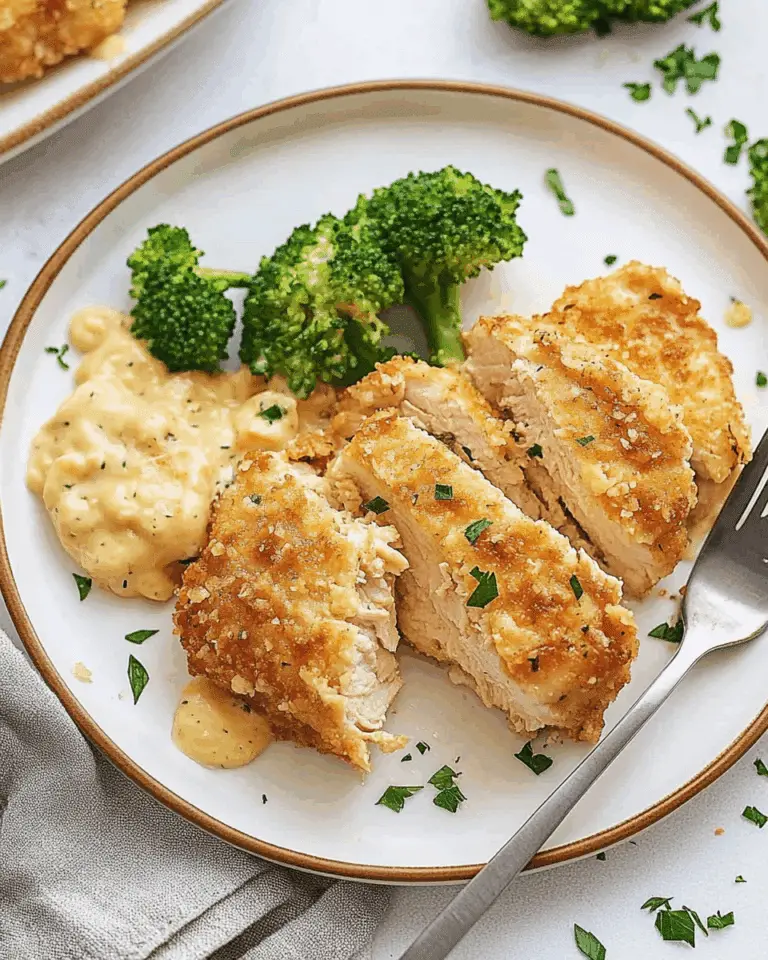If you are craving a dish that feels luxurious but is surprisingly easy to make, this Miso Glazed Salmon Recipe will quickly become your new go-to. The beautifully caramelized miso glaze creates a perfect balance of sweet and savory flavors that coat the tender, flaky salmon. Each bite bursts with umami richness while keeping the fish moist and satisfying. It’s a fantastic recipe that combines simple ingredients into something truly memorable and restaurant-worthy, right from your own kitchen.
Ingredients You’ll Need

The magic of this Miso Glazed Salmon Recipe lies in its straightforward list of ingredients — just a handful but each one essential. From the creamy depth of miso paste to the delicate nuttiness of sesame oil, everything works together to build those irresistible layers of flavor and color.
- 2 pounds salmon, sliced into four filets: The star of the show, fresh salmon gives the dish a succulent and flaky texture.
- Salt and pepper: To season and enhance the natural flavor of the salmon.
- 1/4 cup miso paste: Provides the rich umami base that makes the glaze truly special.
- 2 Tablespoons soy sauce: Adds depth and a slight saltiness to the marinade.
- 1 Tablespoon brown sugar: Balances the savory ingredients with a mild sweetness for perfect caramelization.
- 1 Tablespoon rice vinegar: Brings a subtle tang that brightens the overall flavor.
- 1 teaspoon sesame oil: Offers a fragrant, nutty note that elevates the glaze.
- Chopped green onions and sesame seeds: For garnish, adding a fresh crunch and visual appeal.
How to Make Miso Glazed Salmon Recipe
Step 1: Season and Prepare the Marinade
Begin by generously seasoning your salmon filets with salt and pepper. Then, in a small bowl, whisk together the miso paste, soy sauce, brown sugar, rice vinegar, and sesame oil until smooth. This marinade is the heart of the dish, blending savory, sweet, and tangy notes that will soak into the fish.
Step 2: Marinate the Salmon
Place the salmon in a bowl or shallow dish and pour the marinade over it. Make sure each piece is coated well. Cover and let it marinate in the fridge for anywhere from 1 to 3 hours. This slow soak allows the flavors to deeply penetrate while tenderizing the fish.
Step 3: Preheat the Oven and Prepare to Bake
Once marinated, preheat your oven to 375 degrees Fahrenheit. Before baking, remove the salmon from the marinade and discard the excess. This step keeps the glaze from becoming too runny and ensures that caramelization will happen beautifully.
Step 4: Bake the Salmon
Place the salmon filets in a large oven-safe skillet or baking dish. Bake for 12 to 15 minutes, until the fish is nearly cooked through and turns opaque. The salmon should be tender yet firm enough to hold together when you brush on the glaze.
Step 5: Glaze and Broil to Finish
Reserve about a tablespoon of the marinade before baking to use as your glaze. Brush it generously over each piece of salmon, then switch your oven to the broiler setting. Broil the salmon for 1 to 2 minutes until the glaze caramelizes and lightly browns. The internal temperature should reach around 125 to 130 degrees for perfect doneness.
How to Serve Miso Glazed Salmon Recipe

Garnishes
Nothing finishes this dish quite like a sprinkle of fresh green onions and toasted sesame seeds. They add a delightful burst of color and a textural crunch that contrasts with the silky fish. This simple touch makes your serving look elegant and inviting.
Side Dishes
This miso-glazed salmon pairs wonderfully with steamed rice or a bed of fluffy quinoa to soak up any extra glaze. Lightly sautéed greens such as bok choy or snap peas provide freshness and a bit of bite, balancing the richness of the salmon.
Creative Ways to Present
For an impressive presentation, plate the salmon atop a nest of soba noodles dressed with a light soy and ginger sauce. Alternatively, you can serve it over a vibrant salad of cucumber, carrot ribbons, and avocado for a bright, summery meal that looks as good as it tastes.
Make Ahead and Storage
Storing Leftovers
If you happen to have any leftover miso glazed salmon, store it in an airtight container in the refrigerator for up to two days. The flavors deepen after resting, so the next day’s meal will be just as delicious.
Freezing
While fresh is always best, you can freeze cooked salmon for up to one month. Wrap each portion tightly in plastic wrap and place in a freezer-safe bag. Thaw overnight in the refrigerator before reheating gently.
Reheating
To reheat the salmon without drying it out, warm it slowly in a low oven set to 275 degrees Fahrenheit, covered loosely with foil. This technique helps retain moisture and keeps the glaze from burning. Avoid microwaving if possible, as it can cause uneven heating.
FAQs
Can I use other types of fish for this recipe?
Absolutely! While salmon is ideal for its flavor and texture, you can try this miso glaze on other fatty fish like sea bass or black cod. Just adjust cooking times based on thickness.
How long should I marinate the salmon?
Marinating for at least 1 hour is important for flavor infusion, but no more than 3 hours is recommended to avoid the fish becoming mushy due to the acidic vinegar.
Is white or red miso better for this recipe?
White miso is preferred here because it’s sweeter and milder, complementing the salmon without overpowering it. Red miso is stronger and saltier, which might dominate the dish.
Can I make this recipe gluten-free?
Yes, just be sure to use a gluten-free soy sauce or tamari instead of regular soy sauce to keep the recipe gluten-free without sacrificing flavor.
What wine pairs well with miso glazed salmon?
A light, crisp white wine like a Sauvignon Blanc or a dry Riesling works beautifully, as the acidity cuts through the richness and complements the umami glaze.
Final Thoughts
This Miso Glazed Salmon Recipe is a shining example of how simple ingredients can come together to create an unforgettable meal. Whether you’re hosting friends or treating yourself on a cozy night in, this dish delivers on both flavor and ease. I can’t wait for you to try it and savor that perfect balance of caramelized glaze and tender, flaky salmon—it truly feels like a special occasion every time.
Print
Miso Glazed Salmon Recipe
- Prep Time: 10 minutes
- Cook Time: 18 minutes
- Total Time: 2 hours 28 minutes
- Yield: 4 servings
- Category: Main Dish
- Method: Baking
- Cuisine: Japanese
Description
This Miso Glazed Salmon recipe delivers a perfect balance of sweet and savory flavors with a caramelized miso glaze coating tender, flaky salmon filets. Marinated for a couple of hours and finished under the broiler, this dish is easy to make at home and rivals restaurant-quality seafood.
Ingredients
Salmon
- 2 pounds salmon, sliced into four filets
- Salt and pepper, to taste
Miso Glaze
- 1/4 cup miso paste
- 2 Tablespoons soy sauce
- 1 Tablespoon brown sugar
- 1 Tablespoon rice vinegar
- 1 teaspoon sesame oil
Garnish
- Chopped green onions
- Sesame seeds
Instructions
- Season the Salmon: Lightly salt and pepper the salmon filets on all sides to enhance their natural flavor.
- Prepare the Miso Glaze: In a small bowl, whisk together miso paste, soy sauce, brown sugar, rice vinegar, and sesame oil until the mixture is smooth and well combined. Reserve 1 tablespoon of this marinade for later use as a glaze.
- Marinate the Salmon: Place the salmon filets in a medium bowl and pour the remaining miso marinade over them. Toss gently to coat all sides. Cover and refrigerate for 1 to 3 hours to allow flavors to penetrate the fish.
- Preheat the Oven: Set your oven to 375°F (190°C) and let it fully come to temperature before cooking.
- Sear the Salmon: Heat a large oven-safe skillet over medium heat. Add the marinated salmon filets and discard any excess marinade. Sear the salmon in the skillet briefly on the stovetop for about 1 to 2 minutes just to lightly cook the outer layer.
- Bake the Salmon: Transfer the skillet to the preheated oven and bake the salmon for 12 to 15 minutes or until the fish becomes opaque and is nearly cooked through, reaching an internal temperature close to 120°F.
- Glaze and Broil: Remove the skillet from the oven and brush the salmon filets with the reserved miso glaze. Place the skillet under the broiler on high for 1 to 2 minutes, watching carefully, until the glaze caramelizes and the salmon reaches an internal temperature of 125-130°F in the center.
- Garnish and Serve: Sprinkle chopped green onions and sesame seeds over the glazed salmon before serving for added flavor and visual appeal.
Notes
- Marinating for at least 2 hours improves flavor and glaze adherence, but you can marinate as little as 1 hour if short on time.
- Use skin-on salmon filets for easier handling and a crispier texture if preferred.
- Internal temperature of 125-130°F will yield moist, medium-rare salmon; cook longer for more well-done fish.
- If you do not have an oven-safe skillet, transfer the salmon to a baking dish for the baking step and use a broiler-safe pan for glazing.
- Garnishes like green onions and sesame seeds add a fresh and nutty finish but are optional.

